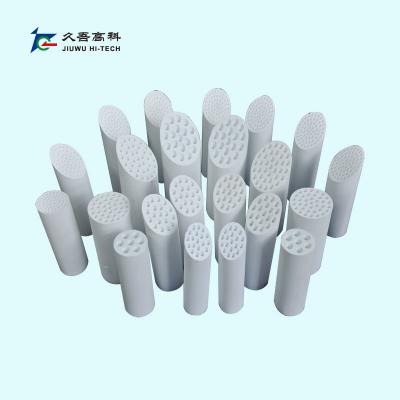Lactic acid is an important natural organic acid. As one of the three traditional organic acids, it is widely existed in animals, plants and microorganisms. According to its optical rotation, it can be divided into L-type and D-type, in which L-lactic acid can be decomposed and absorbed by the human body, so its market demand is much larger, and it has important applications in food, medicine and chemical industries. The World Health Organization advocates the use of L-lactic acid as a food additive and oral medicine to replace the currently commonly used DL-lactic acid. Polylactic acid (PLA) produced with L-lactic acid, in addition to having similar gloss and processing properties to polystyrene, can also be biodegradable, so it has broad prospects for development, but the key is to reduce the production cost and produce high-quality and low-cost L-lactic acid.
1.1 Traditional methods of extraction and purification of lactic acid
At present, the production of L-lactic acid is mainly based on biological fermentation. The traditional process: corn flour fermentation→neutralization→plate and frame filtration→acid hydrolysis→plate and frame filtration→esterification and hydrolysis→concentrated into final product
Lactic acid fermentation broth is a very complex system, containing a large amount of thallus, protein, residual sugar, pigments, inorganic salts, by-product organic acids and unconverted starch. Moreover, in order to reduce the influence of lactic acid on the activity of lactic acid bacteria, it is also necessary to add heavy calcium such as calcium hydroxide to convert lactic acid into calcium lactate. Therefore, the separation and purification process of lactic acid is relatively complicated. The traditional process usually requires plate filter press, acidification, activated carbon decolorization, ion exchange, multi-stage evaporation, etc. In the traditional process, plate and frame filtration is used twice to separate solid and liquid in the feed liquid. The plate and frame is a typical dead-end filtration process, which mainly relies on the filter cake layer formed on the filter cloth to filter, which can only partially remove insoluble solids (mycelium, raw materials, denatured proteins, etc.) in the feed liquid. For soluble proteins, pigments and other macromolecular substances and some tiny solids, they cannot be removed. Therefore, the filtrate is of poor quality and contains a large amount of soluble protein and other impurities. Due to the presence of soluble protein, a large amount of emulsification will be produced in the subsequent process, which will bring certain difficulties to the separation and purification of the product, resulting in a decline in product quality, and because a large amount of denaturant and filter aid are generally added during plate and frame filtration, the filter residue is not easy to deal with and the operating cost is increased. Therefore, it is imperative to update and improve the processing technology of lactic acid fermentation broth.
1.2 Membrane separation technology used in extraction and purification of lactic acid
According to the original process of L-lactic acid, combined with the characteristics of membrane filtration, the production process after technical upgrading is:
Corn flour fermentation→neutralization →plate and frame filtration→ultrafiltration membrane→acid hydrolysis→plate and frame filtration→nanofiltration membrane decolorization→purificated and concentrated into finished products
(1) Use ultrafiltration technology to remove protein and macromolecular pigments so as to clarify the filtrate, reduce the burden of subsequent processes, and improve production efficiency, thereby increasing the yield of subsequent processes and improving product quality.
(2) After adopting the ultrafiltration process, the fermentation broth does not need to add flocculants and filter aids, which reduces production costs.
(3) Since the ultrafiltration concentrate solution does not contain flocculants and filter aids, it can be made into feed after drying, which reduces environmental pollution and increases benefits.
(4) Nanofiltration membrane can further remove macromolecular impurities in the feed liquid and improve product quality.
(5) The nanofiltration membrane can completely penetrate the lactic acid molecule and greatly intercept the reducing sugar, which reduces the reducing sugar content of the final product and improves the thermal stability of the product.
For the separation of microbial cells and the removal of macromolecular proteins, membrane separation technology has significant effects. At present, the use of membrane separation technology to replace traditional plate and frame filtration has become the development trend of the lactic acid production industry.




 +86-25-58849045
+86-25-58849045
 +86-25-58749295
+86-25-58749295
 jiuwu@jiuwu.com
jiuwu@jiuwu.com
 No. 9 Park Road, Pukou District, Nanjing City (Sanqiao Factory)
No. 9 Park Road, Pukou District, Nanjing City (Sanqiao Factory) Call us on:
Call us on:  Email Us:
Email Us:  No. 9 Park Road, Pukou District, Nanjing City (Sanqiao Factory)
No. 9 Park Road, Pukou District, Nanjing City (Sanqiao Factory)

 English
English 한국어
한국어 français
français русский
русский Español
Español
